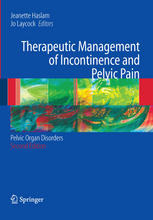

Most ebook files are in PDF format, so you can easily read them using various software such as Foxit Reader or directly on the Google Chrome browser.
Some ebook files are released by publishers in other formats such as .awz, .mobi, .epub, .fb2, etc. You may need to install specific software to read these formats on mobile/PC, such as Calibre.
Please read the tutorial at this link: https://ebookbell.com/faq
We offer FREE conversion to the popular formats you request; however, this may take some time. Therefore, right after payment, please email us, and we will try to provide the service as quickly as possible.
For some exceptional file formats or broken links (if any), please refrain from opening any disputes. Instead, email us first, and we will try to assist within a maximum of 6 hours.
EbookBell Team

4.7
86 reviewsTherapeutic Management of Incontinence and Pelvic Pain, 2nd edition contains contributions from many of the well-known authors of the successful first edition, who have updated their chapters in light of more recent research.
Chapters include coverage of the management and treatment of bladder and bowel dysfunctions in men and women, pelvic organ prolapse; issues concerning the elderly, neurologically impaired patients and those with pelvic pain. Allied updated chapters are presented on research methodology, the importance of fluids and infection control. Other new chapters are concerned with quality of life, the treatment of bladder and bowel dysfunction in children, the history of pelvic floor muscle exercise and manual therapy. In addition, the use of real-time ultrasound to evaluate pelvic floor muscle contractility, exercise balls to promote coordination of trunk stabilisers and the pelvic floor muscles, and the role of the Occupational Therapist in the continence service are discussed. Finally, a new section on ethical issues regarding the management of incontinence completes this well-illustrated text.
This book will be of interest to physiotherapists and nurses working in the continence field, and to all health professionals who wish to gain a better insight into the conservative management of pelvic floor muscle disorders. It will enable the reader to question their present practice and will help in encouraging further research.